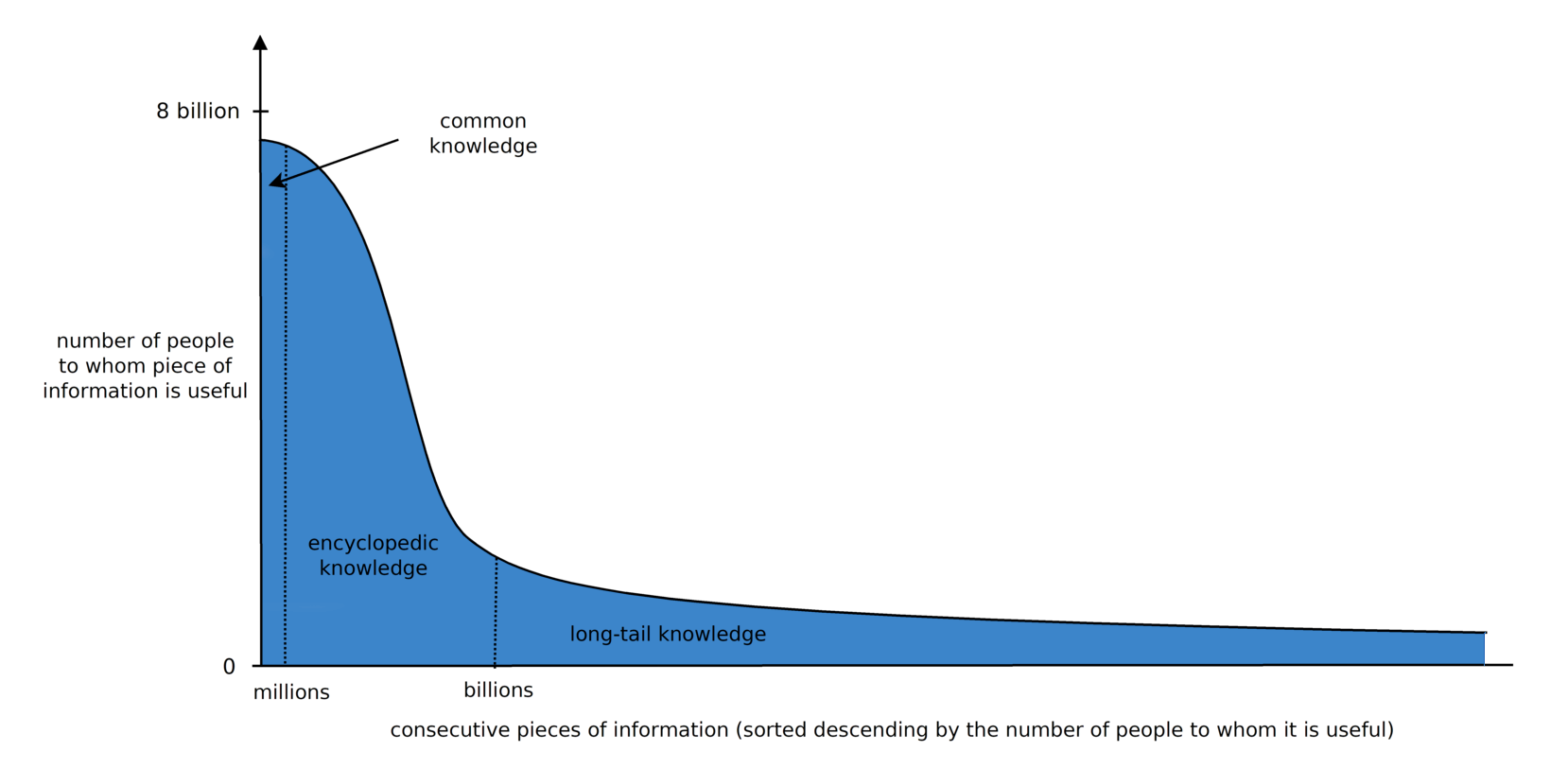The truth as an attractor in the information space
Hypothesis: The truth, defined as the information with 100% credibility calculated by the HITS algorithm in accordance with the consensus theory of truth, is an attractor in the information space.
An interface between all intelligent agents
The post Yet another idea of collaboratively edited knowledge base describes the possibility of building a knowledge database using crowdsourcing. After adding initial knowledge using crowdsourcing, also artificial intelligence and robots could add knowledge to this database during the execution of tasks, for example, while finding answers to the questions of their users or users of the database. People, computer programs, and robots could collaborate with each other to add and evaluate knowledge, increasing the amount and credibility of useful knowledge. Thus, this database could be a common interface for the exchange of knowledge, questions, and tasks between all intelligent agents including people and AI.
Information space and agents’ actions within it
The proposed knowledge database can be seen as an information space in which all intelligent agents can add and evaluate pieces of information, regardless of whether they are people or computer programs. A point in this space is represented by a semantic triple, e.g. the (Laptop, Is, Computer) relation, and the probability of the correctness of this triple. An agent’s goal can be answering questions correctly or any other meta-goal, such as making money or acting for the benefit of others. Agents can plan their actions to best achieve their goals. Planning the process of answering a question involves determining how to carry out the inference and whether additional questions need to be asked to other agents. Planning the meta-goal execution can involve determining what questions to answer and what to do to better achieve one’s goal in the future. Thanks to assessing the agents’ credibility, they would act towards increasing the amount and credibility of useful knowledge. Other agents can copy the methods of the most effective ones. This would increase the collective intelligence of the whole system. Finally, because of the human-readable form of the database, it would be easier to control the safety of the whole system.
Attractor in the information space
In the Q&A session after the Intelligence Stairway talk at the University of Sydney in 2012, Jaan Tallinn said that an attractor steering the behavior of intelligent agents would be needed to create artificial general intelligence from the collective human intelligence [1]. In my opinion, the truth, defined as the information with 100% credibility calculated by the HITS algorithm in accordance with the consensus theory of truth as described in the post Yet another idea of a collaboratively edited knowledge base, can be such an attractor in this information space. I have theoretically shown the functioning of such an attractor in figures 2a-2d in that post.
[1] YouTube: Jaan Tallinn on the Intelligence Stairway
Question: “[…] Do you have any thoughts or concerns about the idea that AGI emerges from us collectively rather than in the lab?”
Answer: “People often think about global emergent brain from the Internet and all the interconnectivity. […] to me it seems unlikely because I think [when] increasing the number of components in a system you also increase ‘degrees of freedom’ that the system has. For example, the number of ‘moving components’ in the Internet is still trivial compared to the oceans and I don’t think oceans are anywhere near becoming kind of controllers of this planet anytime soon. In other words, it’s just not enough to throw moving components into a system. There has to be some kind of attractor in a space that actually steers it towards becoming an agent like in the sense that it actually can understand what the world is about and basically have preferences over different states of the universe.
If somebody can point out strongly: ‘Look there seems to be this kind of attractor’ then I would listen very carefully. But right now I have never seen someone to actually go beyond just saying that ‘okay there seems to be a lot of smart components being connected’.”

